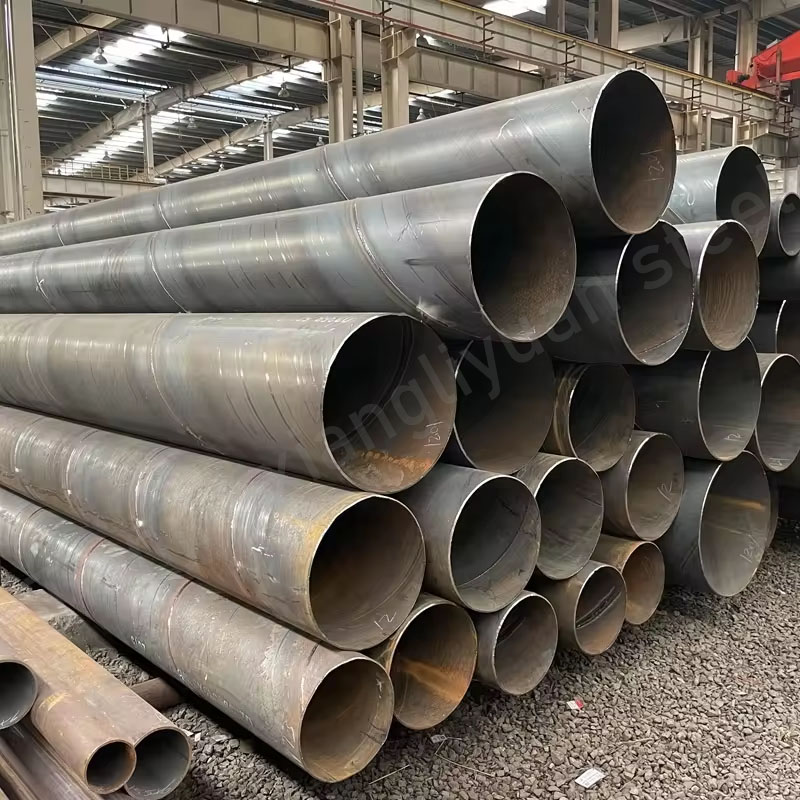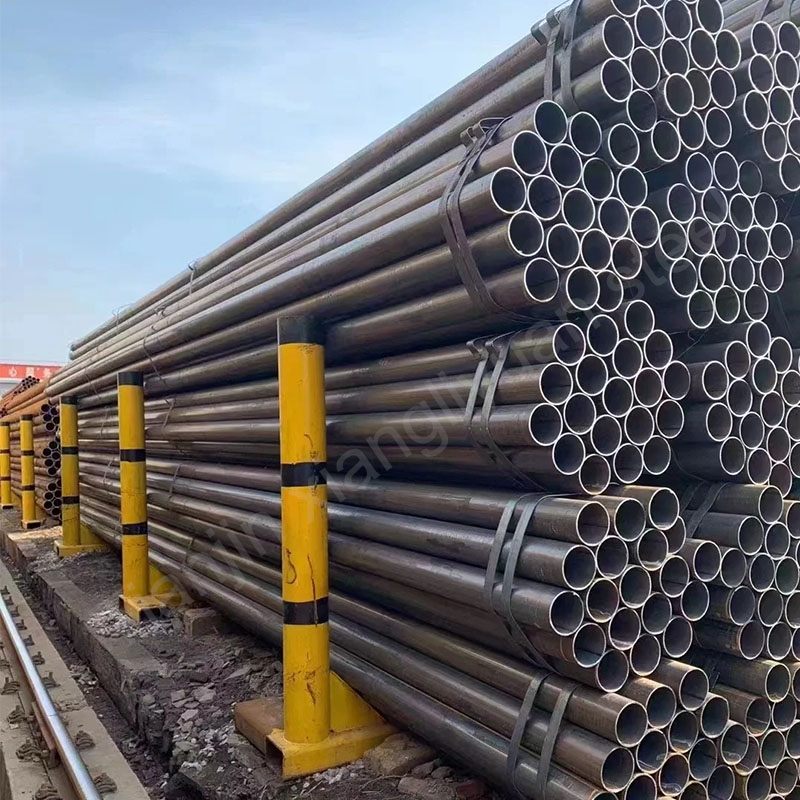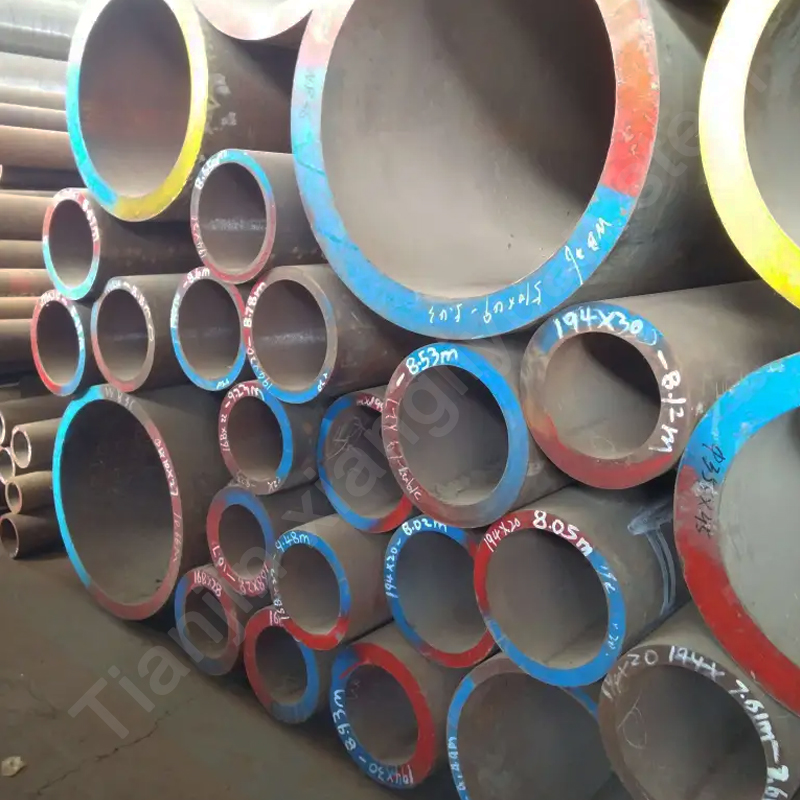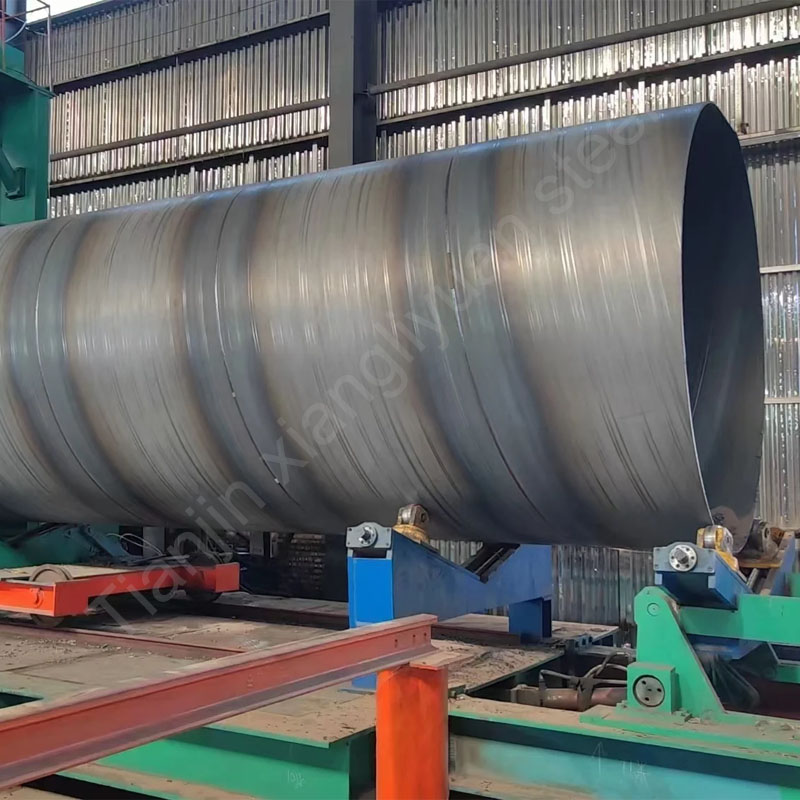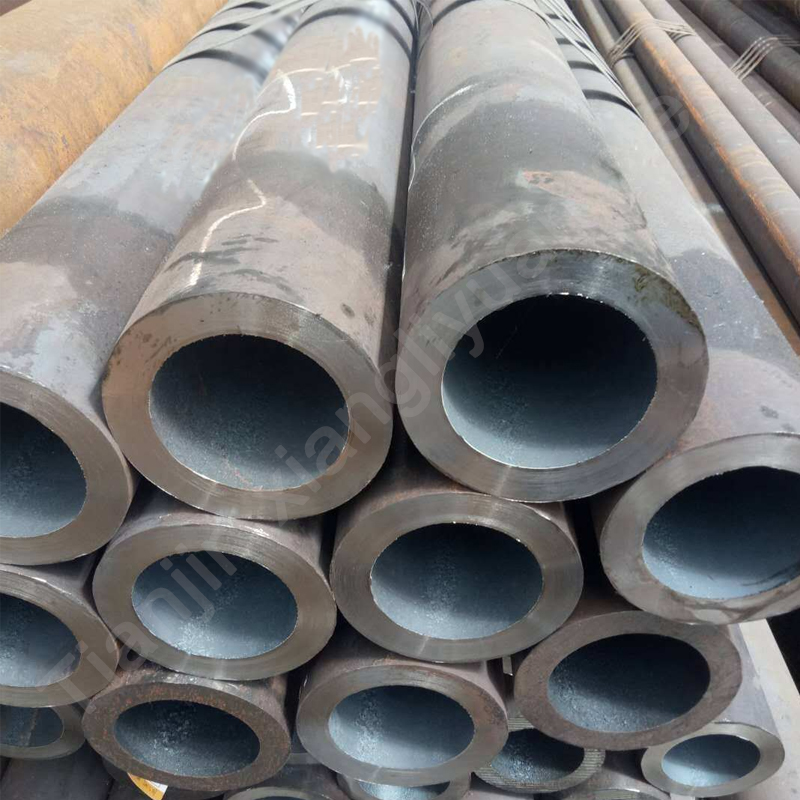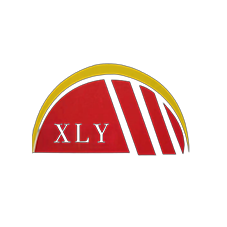Spiral seam submerged arc welded steel pipe is formed by bending hot-rolled strip steel into a spiral shape, and the inner and outer seams are welded by submerged arc automatic welding to form a spiral seam steel pipe (also called spiral welded pipe, spiral pipe spiral steel pipe). It can be widely used in the production of large-diameter steel pipes for the following reasons:
1) As long as the forming angle is changed, steel pipes of various calibers can be produced with the same width of strip steel;
2) Because it is continuously bent, the fixed length of the steel pipe is not limited;
3) The weld seam is evenly distributed on the entire circumference of the steel pipe, so the dimensional accuracy of the steel pipe is high and the strength is also high;
4) It is easy to change the size and is suitable for the production of small batches and multiple varieties of steel pipes.
Since the defect is parallel to the weld seam, for the spiral pipe, the defect of its weld seam is an oblique defect. During use, the equivalent defect length in the main stress direction of the steel pipe, that is, the axial direction of the steel pipe, is smaller than that of the straight seam pipe; secondly, since pipeline steel is all rolled steel plate, the impact toughness has a large anisotropy.
The CVN value along the rolling direction can be 3 times higher than the CVN value perpendicular to the rolling direction. The principal stress of the straight seam pipe is exactly perpendicular to the direction of the lowest impact resistance of the pipe, while the spiral pipe is staggered in the direction of the lowest impact resistance of the pipe, turning the disadvantage of the spiral pipe’s long weld into an advantage.
Standards for spiral submerged arc welded pipes:
Welded pipes are usually used for the transportation of generally low-pressure fluids such as water, gas, air, oil and heating steam.
Ordinary carbon steel wire casing (GB3640-88) is a steel pipe used to protect wires in electrical installation projects such as industrial and civil buildings, installation of machinery and equipment.
Straight seam electric welded pipe (YB242-63) is a steel pipe with a weld parallel to the longitudinal direction of the steel pipe. It is usually divided into metric electric welded pipes, electric welded thin-walled pipes, transformer cooling oil pipes, etc.
Spiral seam submerged arc welded pipe for pressure fluid transportation (SY5036-83) is made of hot-rolled steel strip coil as pipe blank, spirally formed at room temperature, welded by double-sided submerged arc welding, and used for pressure fluid transportation. The steel pipe has strong pressure bearing capacity and good welding performance. It has undergone various rigorous scientific inspections and tests and is safe and reliable to use. The steel pipe has a large diameter, high transportation efficiency, and can save investment in laying pipelines. It is mainly used for pipelines for transporting oil and natural gas.
Spiral seam high-frequency welded pipe for pressure fluid transportation (SY5038-83) is made of hot-rolled steel strip coil as pipe blank, spirally formed at room temperature, and welded by high-frequency lap welding. It is a spiral seam high-frequency welded steel pipe for pressure fluid transportation. The steel pipe has strong pressure bearing capacity, good plasticity, and is easy to weld and process; it has undergone various rigorous and scientific inspections and tests, is safe and reliable to use, has a large diameter, high transportation efficiency, and can save investment in laying pipelines. It is mainly used for laying pipelines for transporting oil, natural gas, etc.
Production process of spiral seam submerged arc welded steel pipe
Spiral steel pipe is made of strip steel coil as raw material, extruded at room temperature, and welded by automatic double-wire double-sided submerged arc welding process.
(1) The raw materials are strip steel coil, welding wire, and flux. They must undergo strict physical and chemical inspection before being put into use.
(2) The head and tail of the strip steel are butt-jointed by single-wire or double-wire submerged arc welding, and automatic submerged arc welding is used for repair welding after rolling into steel pipe.
(3) Before forming, the strip steel is leveled, trimmed, planed, surface cleaned, conveyed and pre-bent.
(4) An electric contact pressure gauge is used to control the pressure of the oil cylinder on both sides of the conveyor to ensure the smooth conveying of the strip steel.
(5) External or internal control roller forming is adopted.
(6) A weld gap control device is used to ensure that the weld gap meets the welding requirements. The pipe diameter, misalignment and weld gap are strictly controlled.
(7) Both internal and external welding are performed by single-wire or double-wire submerged arc welding using an American Lincoln electric welder to obtain stable welding specifications.
(8) All welds are inspected by online continuous ultrasonic automatic flaw detectors to ensure 100% non-destructive testing coverage of spiral welds. If there are defects, an automatic alarm will be sounded and a mark will be sprayed. The production workers can adjust the process parameters at any time to eliminate the defects in time.
(9) The steel pipes are cut into single pieces by an air plasma cutting machine.
(10) After cutting into single steel pipes, each batch of steel pipes must undergo a strict first inspection system to check the mechanical properties, chemical composition, fusion status, surface quality of the welds and non-destructive testing to ensure that the pipe making process is qualified before it can be officially put into production.
(11) The parts with continuous ultrasonic flaw detection marks on the welds are re-inspected by manual ultrasonic and X-ray. If there are defects, they are repaired and then subjected to non-destructive testing again until it is confirmed that the defects have been eliminated.
(12) The strip butt welds and the pipes where the T-joints intersect with the spiral welds are all inspected by X-ray television or film.
(13) Each steel pipe is subjected to a hydrostatic pressure test, and the pressure is radially sealed. The test pressure and time are strictly controlled by the steel pipe water pressure microcomputer detection device. The test parameters are automatically printed and recorded.
(14) The pipe end is machined to accurately control the end face verticality, groove angle and blunt edge.

